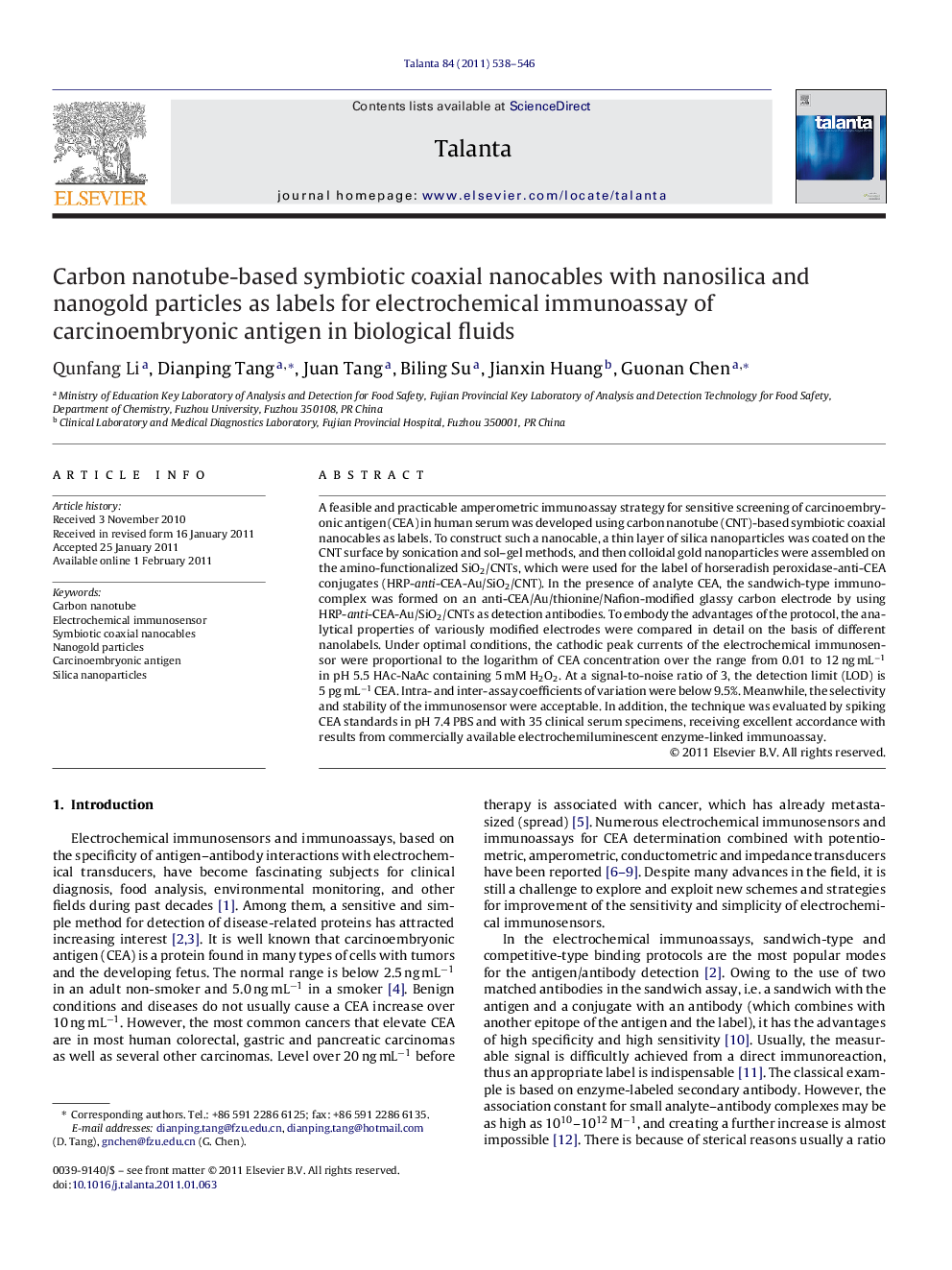| Article ID | Journal | Published Year | Pages | File Type |
|---|---|---|---|---|
| 10560165 | Talanta | 2011 | 9 Pages |
Abstract
A feasible and practicable amperometric immunoassay strategy for sensitive screening of carcinoembryonic antigen (CEA) in human serum was developed using carbon nanotube (CNT)-based symbiotic coaxial nanocables as labels. To construct such a nanocable, a thin layer of silica nanoparticles was coated on the CNT surface by sonication and sol-gel methods, and then colloidal gold nanoparticles were assembled on the amino-functionalized SiO2/CNTs, which were used for the label of horseradish peroxidase-anti-CEA conjugates (HRP-anti-CEA-Au/SiO2/CNT). In the presence of analyte CEA, the sandwich-type immunocomplex was formed on an anti-CEA/Au/thionine/Nafion-modified glassy carbon electrode by using HRP-anti-CEA-Au/SiO2/CNTs as detection antibodies. To embody the advantages of the protocol, the analytical properties of variously modified electrodes were compared in detail on the basis of different nanolabels. Under optimal conditions, the cathodic peak currents of the electrochemical immunosensor were proportional to the logarithm of CEA concentration over the range from 0.01 to 12 ng mLâ1 in pH 5.5 HAc-NaAc containing 5 mM H2O2. At a signal-to-noise ratio of 3, the detection limit (LOD) is 5 pg mLâ1 CEA. Intra- and inter-assay coefficients of variation were below 9.5%. Meanwhile, the selectivity and stability of the immunosensor were acceptable. In addition, the technique was evaluated by spiking CEA standards in pH 7.4 PBS and with 35 clinical serum specimens, receiving excellent accordance with results from commercially available electrochemiluminescent enzyme-linked immunoassay.
Keywords
Related Topics
Physical Sciences and Engineering
Chemistry
Analytical Chemistry
Authors
Qunfang Li, Dianping Tang, Juan Tang, Biling Su, Jianxin Huang, Guonan Chen,
